Cartier and America

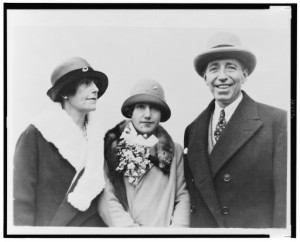 |
The “King of Jewelers”, Pierre Cartier, (left with his wife and daughter) began his career in late nineteenth century Paris during the Belle Époque or “golden age”. He was famous for designing beautifully made diamond and platinum jewelry created for the courts of Europe and upper-class Americans. In the early 20th century, he opened the New York Cartier store. Cartier’s jewelry made its mark due to the ingenuity of its designs and its exquisite craftsmanship.
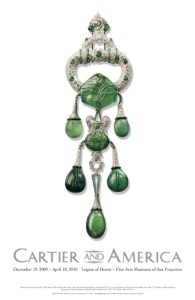 |
His creativity is being celebrated in an exclusive exhibit, Cartier and America, at San Francisco’s Legion of Honor museum though May 9, 2010. This exhibition celebrates Cartier’s 20th century work through the 1960s and 1970s, when Cartier supplied celebrities with their jewels and luxury accessories. The jewelry and works of art include more than 300 objects from the private collection of Cartier housed in Geneva.
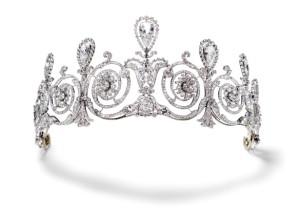 |
This collection includes not only Cartier’s jewelry and tiaras, but also common objects such as a cigarette case and “mystery” clocks, in which the hands turn inside a crystal without any visible connection to a hidden mechanism.
 |
Marking Cartier’s 100 years in the United States, the exhibition concentrates on pieces owned by Americans, featuring numerous commissions for American “royalty,” Hollywood stars, and heiresses. Owned by Mrs. Richard Townsend of Washington, D.C., this tiara (above) is an example of the style when Americans wore grand head ornaments in the years leading up to World War I. It is designed in Cartier’s signature Louis XVI style. Mrs. Richard Townsend complemented her grand tiara with this substantial breast ornament (right) of entwined roses and lilies.
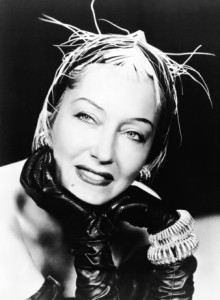 |
Gloria Swanson (left) wore this pair of rock crystal and diamond bracelets (below) in the 1950 movie directed by Billy Wilder, Sunset Boulevard, where she stars as Norma Desmond, a faded movie star. This pair of bracelets is composed of platinum and an assortment of diamonds: baguette, round and single-cut. One bracelet contains forty-seven rock crystal half discs, the other has thirty rock crystal half discs and sixty rock crystal beads.
 |
Cartier was inspired by precious gems from India to create a luscious
multigem style known as Tutti Frutti jewels. These pieces were designed with colored, carved gems, cabochons and smooth or ribbed beads.
The most striking piece of this type - the “Hindu necklace” – (below) was commissioned in 1936 by Daisy Fellowes, a woman of elegance with outrageous style.
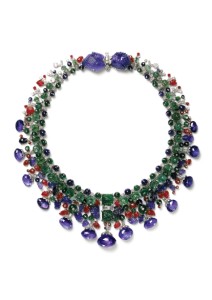 |
She was known as the ‘world’s most elegant woman’ and daughter of Isabelle Singer (of the sewing machine dynasty). Fellowes asked Cartier to create a flexible collar of rubies, emeralds, sapphires and diamonds set in platinum, with a removable clip brooch composed of two huge sapphires in the center. She wore the jewels just once, to a costume ball in Venice in 1952.
Mike Todd, the third husband of Elizabeth Taylor (below), gifted his wife with this Cartier ruby and diamond necklace in 1957. Each one of the pieces in this exhibit, from the tiaras commissioned by royalty to the glamorous Hollywood jewels, has its own history and brings to life various periods of time, as well as the memorable people who owned them.
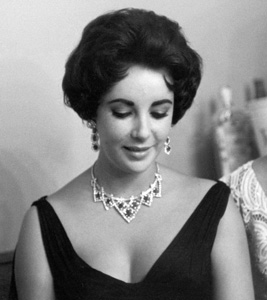 |
All photos courtesy of the Legion of Honor.
This site needs an editor - click to learn more!

Related Articles
Editor's Picks Articles
Top Ten Articles
Previous Features
Site Map
Content copyright © 2023 by Ann Marie Hodrick. All rights reserved.
This content was written by Ann Marie Hodrick. If you wish to use this content in any manner, you need written permission. Contact
BellaOnline Administration
for details.


